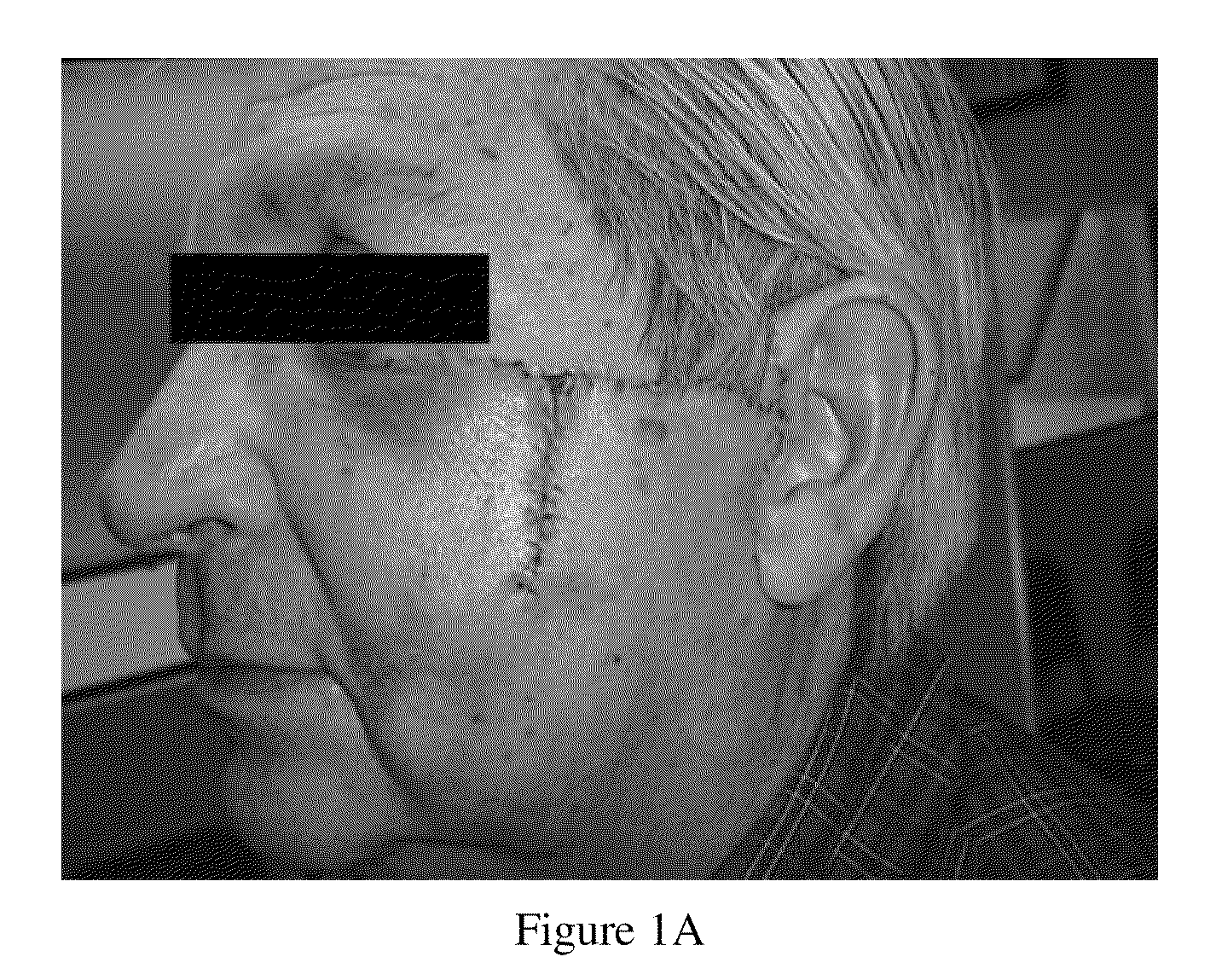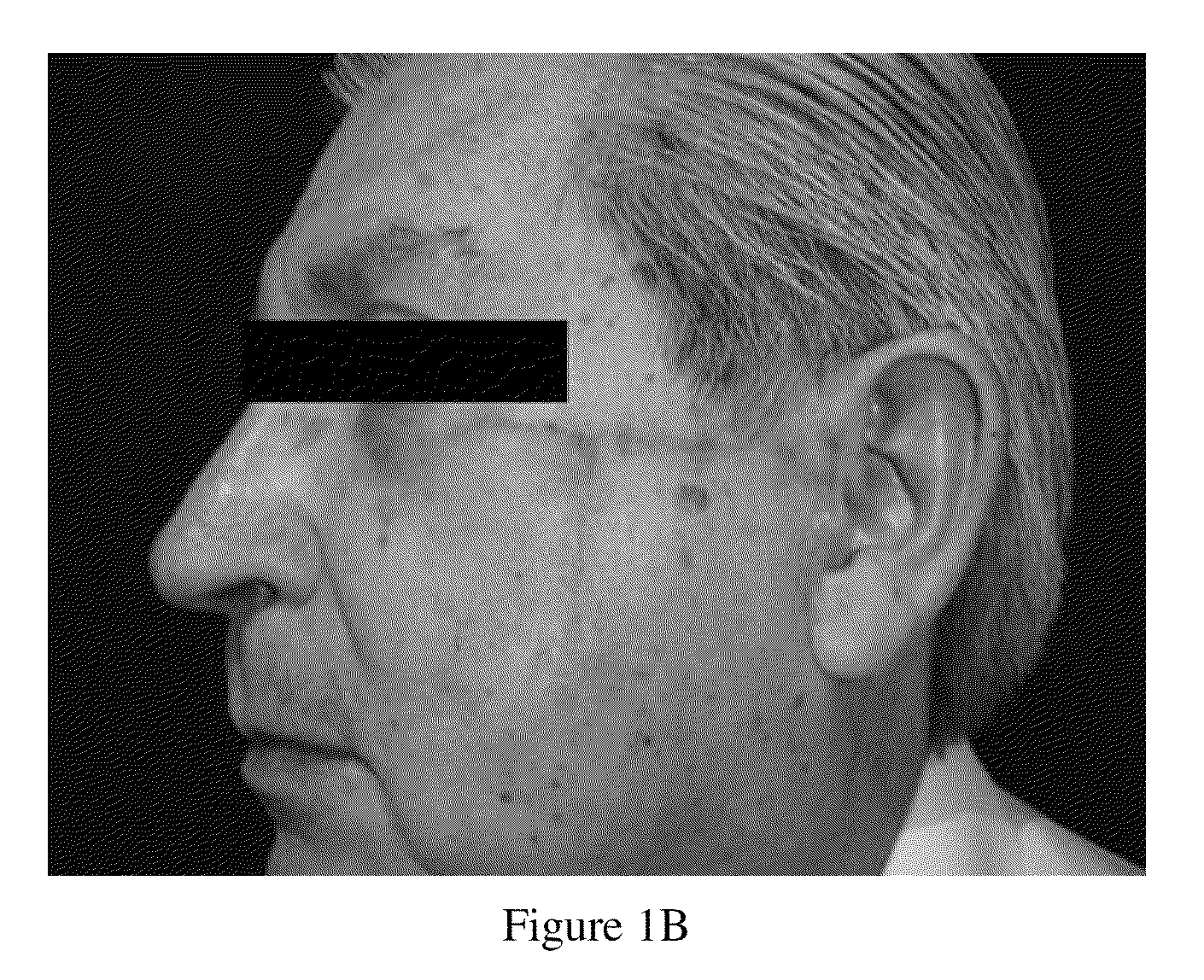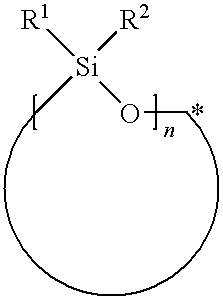Silicone gel-based compositions for wound healing and scar reduction
a technology of compositions and gels, applied in the field of compositions, can solve the problems of loss of flexibility, loss of range of motion, and loss of touch sense, and achieve the effect of reducing the loss of flexibility, reducing the loss of scars, and improving the healing
- Summary
- Abstract
- Description
- Claims
- Application Information
AI Technical Summary
Benefits of technology
Problems solved by technology
Method used
Image
Examples
examples
1. Preparation of Exemplary Composition (Example 1)
[0020]A mixture of cyclopentasiloxane (585 g), phenyltrimethicone dispersion of polysilicone-11 (Gransil™ PM-Gel) (350 g) and polydimethylsiloxane 200 cSt (40 g) is stirred and heated slowly to 50° C. While the heating is in progress, polymethysilsequioxane powder, 4-8 μm (Tospearl™ 2000B) (25 g) is added, followed by ascorbyl tetraisopalmitate (0.5 g). The mixture is stirred at 50° C. until homogenous, then cooled to room temperature.
2. In Vivo Testing (Rabbit Ear Model)
[0021]Using a dermal biopsy punch and a dissecting microscope, 7-mm wounds were made on the ventral surface of each ear of four 3-kg New Zealand White rabbits (6 wounds on each ear). The wounds involved complete removal of the epithelium, dermis, and perichondrium. The wounds were covered with a polyurethane film until healing was complete (17 days).
[0022]The wounds on one ear were then treated once daily for 18 days by topically application of the silicone gel comp...
PUM
| Property | Measurement | Unit |
|---|---|---|
| Percent by mass | aaaaa | aaaaa |
| Percent by mass | aaaaa | aaaaa |
| Percent by mass | aaaaa | aaaaa |
Abstract
Description
Claims
Application Information
 Login to View More
Login to View More - R&D
- Intellectual Property
- Life Sciences
- Materials
- Tech Scout
- Unparalleled Data Quality
- Higher Quality Content
- 60% Fewer Hallucinations
Browse by: Latest US Patents, China's latest patents, Technical Efficacy Thesaurus, Application Domain, Technology Topic, Popular Technical Reports.
© 2025 PatSnap. All rights reserved.Legal|Privacy policy|Modern Slavery Act Transparency Statement|Sitemap|About US| Contact US: help@patsnap.com



